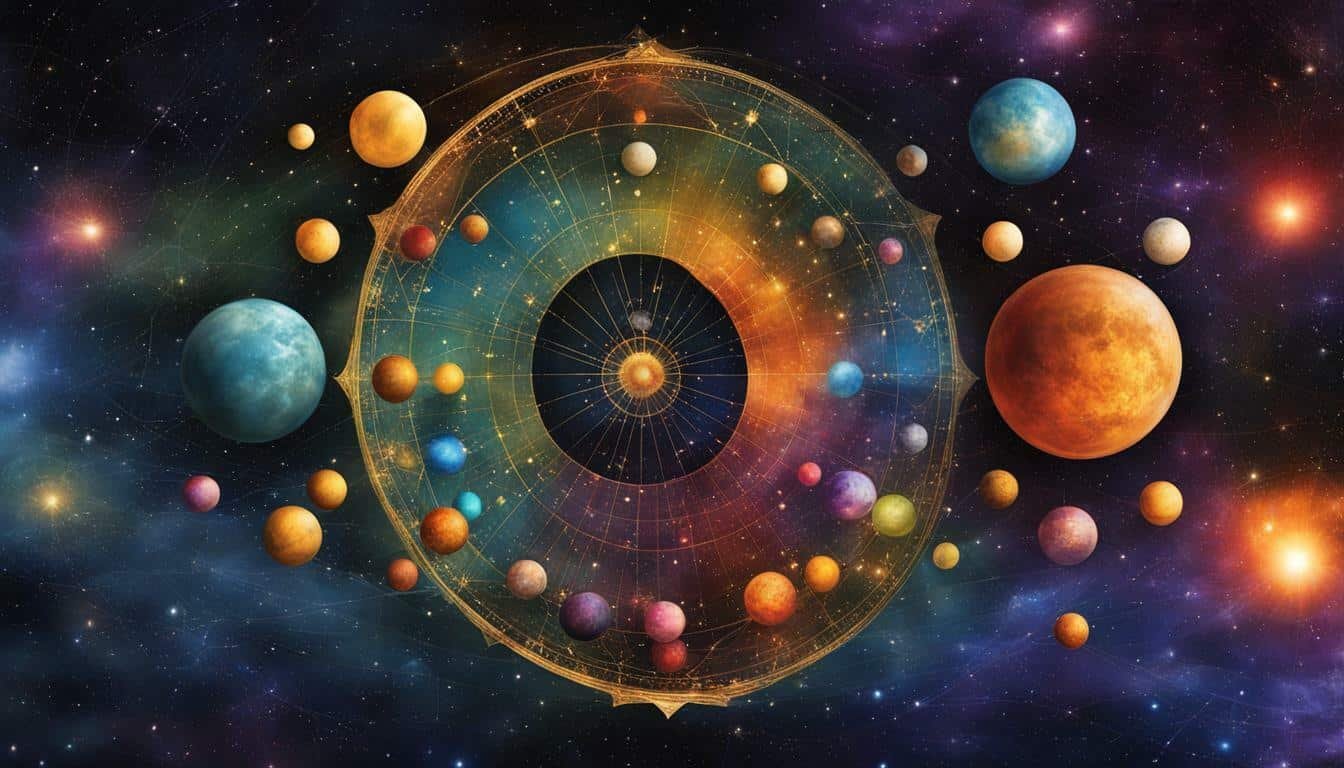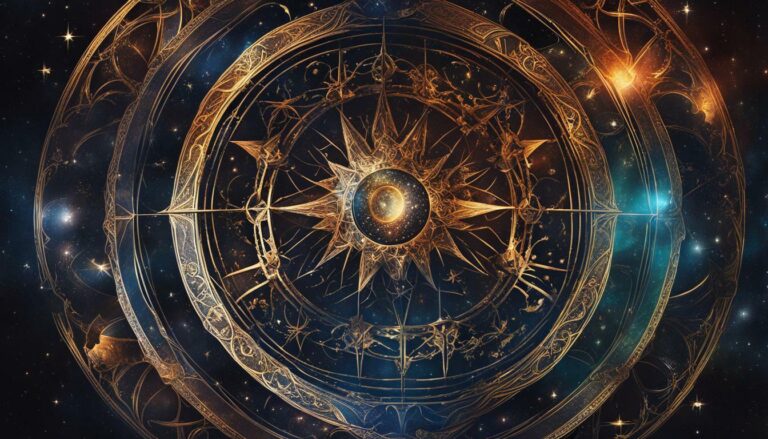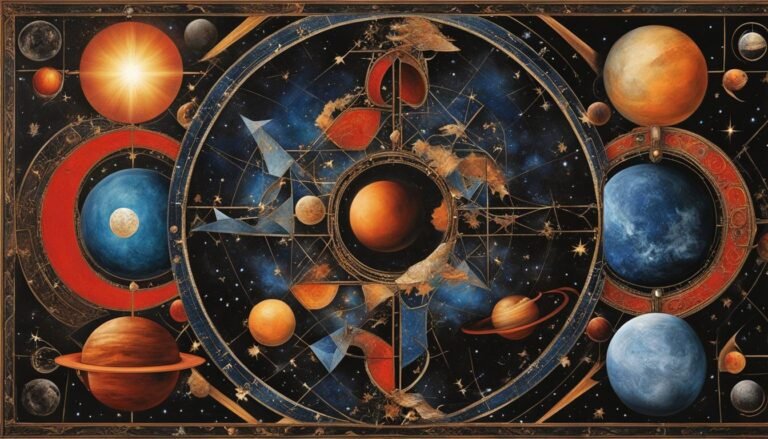What is an Orb in Astrology?
Welcome to the fascinating world of astrology, where the positions of celestial bodies are believed to influence human affairs and natural phenomena. When it comes to interpreting your horoscope, one term you may come across is “orb”. But what exactly does it mean? Let’s explore the concept of orbs in astrology and provide a comprehensive definition for better understanding.
- An orb in astrology refers to the degree of influence a planet has on another planet or a point in a horoscope.
- Orbs play a crucial role in determining the strength and accuracy of astrological aspects.
- Understanding the role and interpretation of orbs can unlock deeper insights into your astrological profile.
- Orb size is important in astrology, as different sizes can affect the intensity and significance of planetary aspects.
- By mastering the calculation and application of astrological aspects, you can gain a more nuanced understanding of the dynamics between planetary energies in your chart.
The Role of Orbs in Astrology
Orbs play a critical role in astrology and are used to interpret charts. If you’re wondering how do orbs work in astrology, then let’s break it down. Orbs refer to the degrees of separation between planets that can still be considered a significant aspect.
While some astrologers use a fixed degree to determine whether two planets are in aspect, others use a range of degrees, known as an orb. The significance of orbs in astrology lies in the fact that they can affect the strength and accuracy of planetary aspects.
For instance, a tight orb can indicate a strong and dominant aspect, while a wide orb can suggest a weaker and less significant aspect. By understanding the role of orbs in astrology, you can gain deeper insights into your horoscope and unlock hidden meanings.
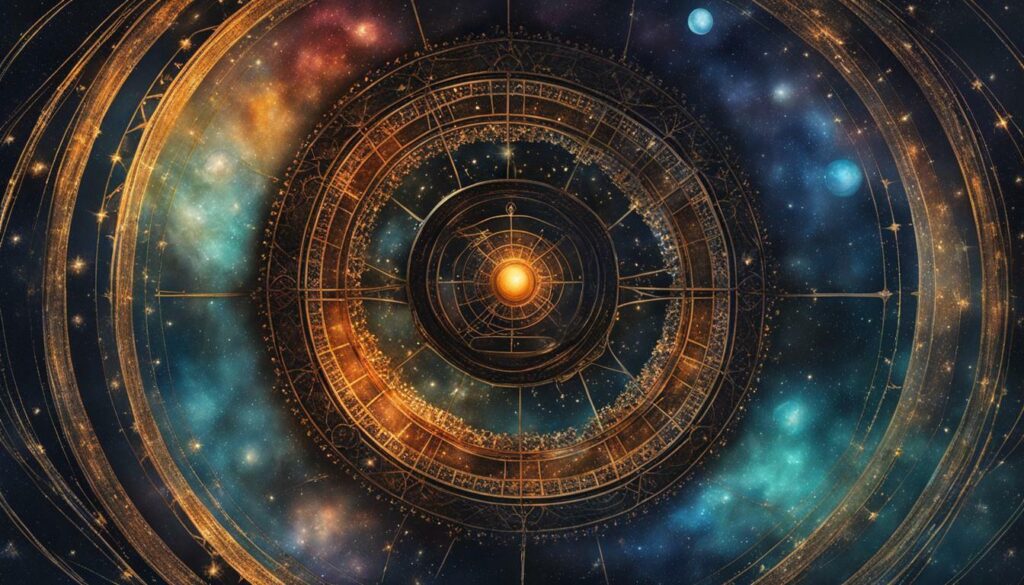
The significance of orbs in astrology can manifest in various ways. For instance, they can reveal hidden talents, provide insights into personality traits, and help identify potential challenges and opportunities. Orbs can also provide guidance on relationship dynamics and the overall direction of your life.
The Importance of Understanding Orb Significance
- Orbs can affect the intensity and strength of astrological aspects
- Different orb sizes can indicate varying degrees of significance
- Understanding orb sizes is crucial to interpreting astrological charts accurately
By recognizing the importance of orbs in astrology, you can learn how to harness their power and apply their insights to your life. Whether you’re a seasoned astrologer or a curious beginner, delving deeper into the significance of orbs can help you gain a richer and more meaningful understanding of your horoscope.
Exploring Planetary Orbs in Astrology
Planetary orbs are an essential component of the astrological chart, and understanding them is crucial to interpreting your horoscope. Simply put, an orb is the degree of influence a planet has on an astrological aspect. The closer a planet is to an aspect, the stronger its influence, and the wider the gap between the two, the weaker its impact.
Calculating orb degrees in astrology can be a bit complicated, but the concept is relatively straightforward. The size of the orb depends on the planet and the aspect being analyzed. For example, the orb for a conjunction aspect is much smaller than that of a trine aspect. Conjunction aspects generally have a one-degree orb, whereas trine aspects can have an orb of up to 10 degrees.
Understanding planetary orbs in astrology is a vital component of interpreting your astrology chart accurately. Orb degrees aren’t just arbitrary measurements; they provide valuable information about the strength of different aspects of your chart.
For instance, if the orb between Jupiter and your moon is 1 degree, it suggests that the influence of Jupiter on your emotional self is potent. However, if the orb between Jupiter and your moon is 10 degrees, the effect of Jupiter is much less pronounced.
Here is an example of how to calculate the orb size in astrology. If the distance between your sun and Venus is 6 degrees, and the orb size for a conjunction aspect is 1 degree, you would conclude that the sun and Venus have a conjunction aspect in your chart.
When analyzing the planetary orbs in your chart, it’s essential to take into account the size and proximity of the orbs. Planets in close proximity to the aspect have a more potent influence than those further away, and larger orbs can indicate weaker aspects.

The placement and interpretation of planetary orbs in your astrology chart can provide valuable insights into your personality traits, emotions, and relationships. By understanding and interpreting the significance of orb size and proximity, you can gain a deeper understanding of your overall astrological profile.
Interpreting Orbs in Astrology Charts
Interpreting the orbs in your astrology chart is a fascinating and complex process that requires careful analysis. Orbs are the degrees of separation between two planets or other astrological points, and they determine the strength and significance of the aspect between them.
When interpreting orbs, the first step is to determine the size of the orbs. This can be done by looking at the degree of separation between each planet or point and comparing it to the accepted orb size. The accepted orb size varies depending on the astrological aspect being analyzed and can range from as little as 1 degree to as much as 10 degrees.
Once the size of the orbs has been determined, the next step is to analyze their proximity. This involves looking at how close the planets or points are to each other and whether they are directly aligned or offset. The closer the orbs are, the stronger the aspect, and the more directly aligned they are, the more intense the effect.
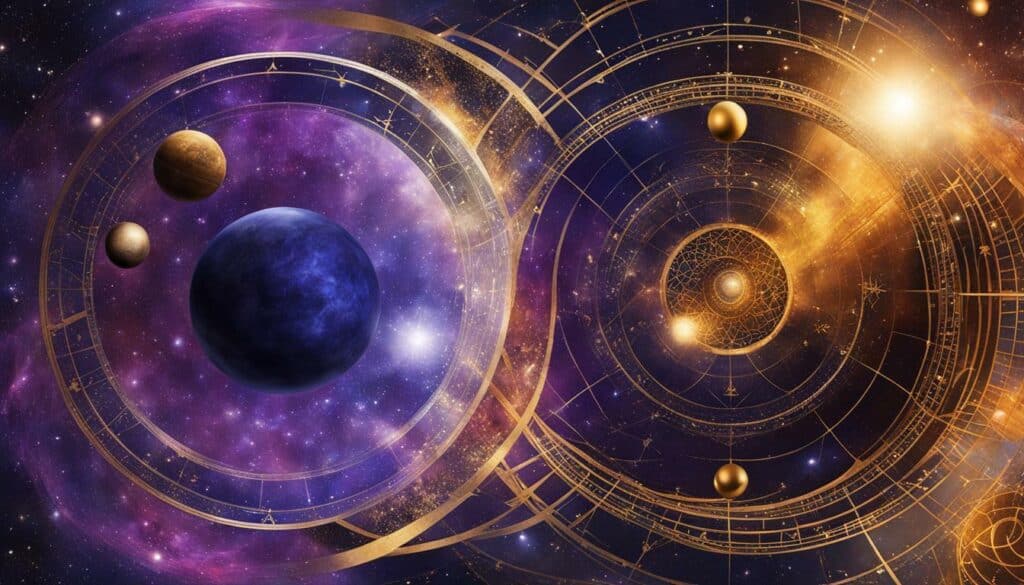
It’s important to note that interpreting orbs is not an exact science and requires a certain amount of intuition and experience. Some astrologers may use tighter orbs, while others may use looser ones. Ultimately, it’s up to the individual astrologer to determine what works best for them and their clients.
Interpreting orbs is an essential part of understanding your astrology chart and gaining deeper insights into your personality and life path. By analyzing the size and proximity of orbs, you can uncover hidden meanings and unlock the secrets of the universe.
The Significance of Orb Size in Astrology
Orb size is an essential factor in astrology that determines the strength and accuracy of astrological aspects. It refers to the range of degrees within which a planet or point in a horoscope can form an aspect with another planet or point. The orb size of an aspect can vary depending on the type of aspect and the planets involved.
Understanding the impact of orb size is crucial to interpreting your horoscope accurately. A tighter orb signifies a stronger and more potent aspect, while a wider orb indicates a weaker and less significant aspect. For instance, a conjunction between two planets with a one-degree orb is more powerful and impactful than a conjunction with a five-degree orb.
On the other hand, a wider orb could represent a more harmonious aspect, indicating that the energies of the planets involved are compatible with each other, even if they are not in a tight aspect. For instance, a trine with a ten-degree orb could imply an easy flow of energy and positive outcomes.
It’s essential to note that orb sizes can vary based on personal preferences and astrological traditions. Some astrologers prefer to use tighter orbs, while others lean towards wider orbs. It’s important to choose the orb size that resonates with you and your astrological practice.
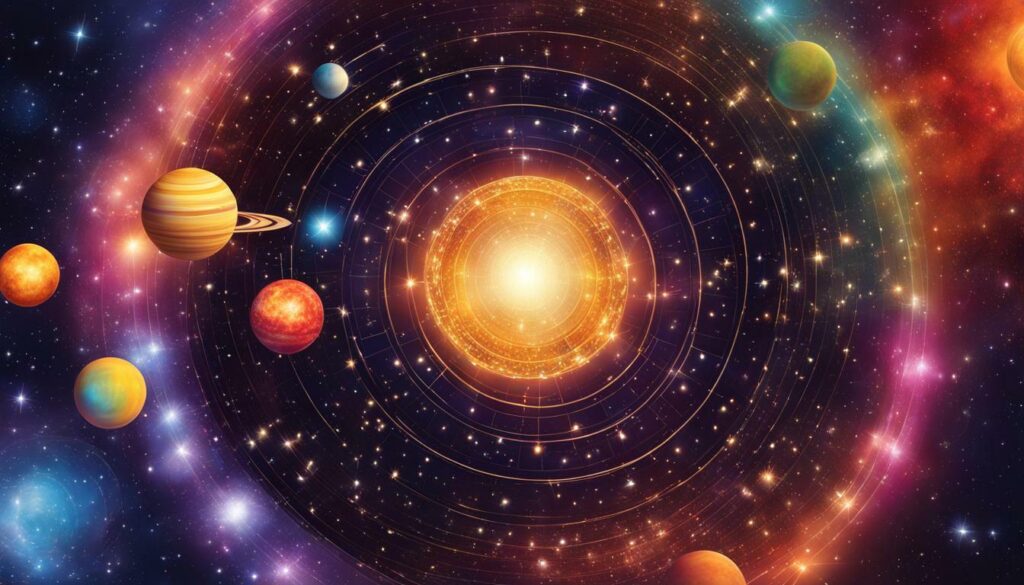
Overall, understanding the significance of orb size in astrology is essential to interpreting your horoscope accurately. By considering the orb sizes of various aspects in your chart, you can gain a deeper understanding of the dynamics between planetary energies and gain more nuanced insights into your astrological profile.
How to Calculate and Apply Astrological Aspects
Calculating and applying astrological aspects is an essential aspect of understanding your horoscope. Orbs play a crucial role in determining the strength and intensity of these aspects. Astrological aspects refer to the relationships between different planetary energies and indicate the type of energy that will dominate at a particular moment.
When it comes to calculating these aspects, you need to consider the strength of each planet in your chart and its position in relation to other planets. Orbs can help you determine the intensity of these planetary energies and how they interact with each other. For instance, a smaller orb indicates a tighter and more intense aspect, while a larger one signifies a weaker connection.
In applying astrological aspects, it’s important to remember that not all aspects are created equal. Some have a more significant impact than others, depending on the planets involved and the size of the orb. For example, a conjunction between two planets has a powerful effect, while a trine indicates a harmonious relationship between the planets involved.
Understanding how to calculate and apply aspects can take time, but it’s an essential skill for gaining deeper insights into your horoscope. By mastering the use of orbs in relation to aspects, you can gain a more nuanced understanding of the complex interplay between planetary energies.
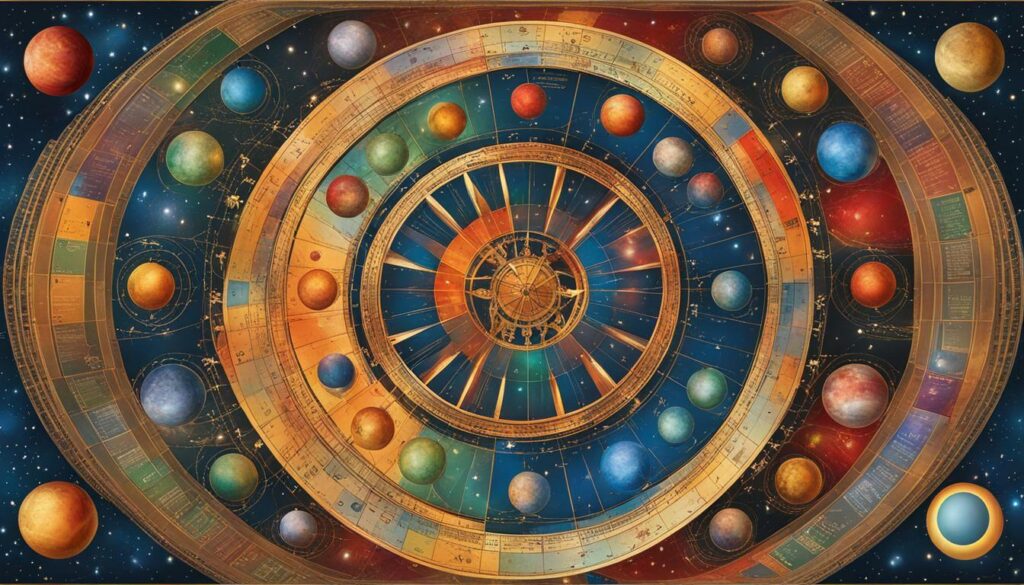
Whether you’re a seasoned astrologer or just starting on your journey, the role of orbs in astrology is a crucial aspect to understand. By exploring their significance and understanding how to calculate and apply astrological aspects, you can gain a deeper understanding of your horoscope and unlock hidden insights about yourself. So let the orbs guide you on your cosmic journey, and embrace the fascinating world of astrology!
Conclusion
In conclusion, I hope this article has helped you understand the concept of orbs in astrology. We’ve uncovered the mysteries surrounding their role, significance, interpretation, and impact on astrological aspects. By understanding the measurement of orbs, you can gain a deeper understanding of the planetary energies affecting your horoscope.
It’s important to remember that astrology is not a one-size-fits-all approach. Your birth chart is unique to you, and interpreting it requires a combination of knowledge, intuition, and personal experience. By mastering the art of interpreting orbs, you can gain a more nuanced understanding of your astrological profile and discover new insights about yourself.
At the end of the day, astrology is a fascinating tool for self-discovery and personal growth. By embracing the cosmic journey and letting the orbs guide you, you can gain a deeper understanding of yourself and the world around you. So why not give it a try? Who knows what you might discover!
FAQ
Q: What is an orb in astrology?
A: An orb in astrology refers to the allowance given to planetary aspects. It represents the degree of influence or distance within which an aspect is considered valid. Essentially, it determines how close the planets need to be to form a significant aspect in a birth chart or horoscope.
Q: How do orbs work in astrology?
A: Orbs work by defining the range within which aspects between planets are considered influential. The size of the orb determines the strength and significance of the aspect. For example, a smaller orb indicates a more precise and potent aspect, while a larger orb allows for a wider range of influence.
Q: What is the significance of orbs in astrology?
A: The significance of orbs in astrology lies in their ability to refine the interpretation of aspects. By considering the size and proximity of orbs, astrologers can assess the strength and intensity of planetary influences. Orbs help to determine the accuracy and impact of aspects in a birth chart’s analysis.
Q: How are planetary orbs calculated in astrology?
A: Planetary orbs in astrology are calculated by assigning a specific degree range to each aspect. The most common orbs used range from 0 to 10 degrees, depending on the astrologer’s preference and the specific aspect being considered. These assigned degrees define the range within which the aspect is deemed significant.
Q: How can I interpret orbs in astrology charts?
A: Interpreting orbs in astrology charts involves assessing the size and proximity of aspects. Smaller orbs indicate a stronger and more potent influence, while larger orbs suggest a broader and more diluted effect. By analyzing the orbs, you can gain insights into the intensity and importance of planetary interactions in your birth chart.
Q: What is the significance of orb size in astrology?
A: The size of orbs in astrology directly affects the strength and accuracy of planetary aspects. A smaller orb size indicates a more precise and impactful aspect, while a larger orb size allows for a wider range of influence and a more flexible interpretation of the aspect. Understanding orb sizes is crucial for accurate chart reading.
Q: How do I calculate and apply astrological aspects?
A: To calculate and apply astrological aspects, you need to consider the orb degrees assigned to each aspect. Once you determine the orb size, you can identify the planets’ degree positions in your birth chart and analyze their proximity to form aspects. By applying the orb degrees, you can determine the strength and influence of each aspect in your chart analysis.

